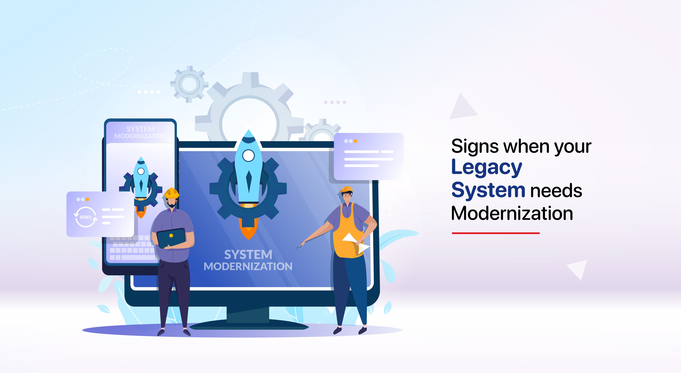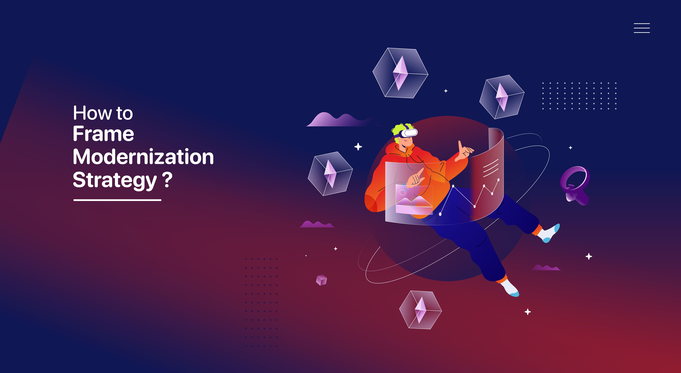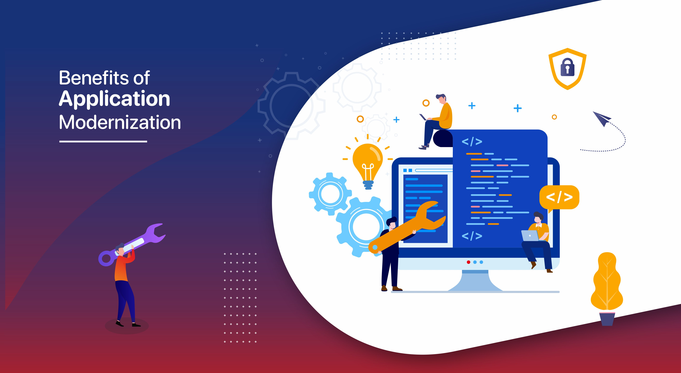Application Modernization Strategies: 7 Options To Modernize Legacy Systems


Learn how to modernize your applications without disrupting your business.
Legacy systems are difficult to maintain, improve, integrate with new systems and demand high maintenance annual cost.
However, its not easy to replace an old system quickly, especially when it handles critical business processes of an organization. Before exploring further, need to check when to consider legacy software modernization:
- Inability of the existing system to accept and process multiple data formats from internal software and partner systems.
- Need for customized integrations to connect with new applications.
- Inadequacy of the software to handle large volumes of data from new applications in a timely manner.
- Incapability of existing IT systems to detect and promptly rectify data processing errors.
- Maintenance expenses for legacy IT infrastructure surpassing the cost of modernizing it.
If you need to modernize legacy applications, the best approach depends on the problem you’re trying to solve. Below are the steps to evaluate right approach to modernize application:
STEP 1: Evaluate legacy systems using six drivers
Assessing legacy systems involves six primary drivers that determine the need for application modernization. These drivers are issues, concerns, or obstacles created by the legacy application's technology, architecture, or functionality.
From a business viewpoint, three drivers are relevant: business fit, business value, and agility. If the legacy application does not comply with the requirements set by digital business, modernization is necessary to ensure a proper fit and provide greater business value. Applications that lack agility to meet the demands of digital business may pose a cost or risk liability.
From an IT perspective, the other three drivers are cost, complexity, and risk. If the total cost of ownership is excessive, the technology too complex, or security, compliance, support, or scalability compromised, modernization is imperative.
The most favorable modernization opportunities are those that involve multiple drivers from both business and IT perspectives.
STEP 2: Evaluate options for modernization:
- Encapsulation: Convert application data and functions into services using an API to leverage and extend application features.
- Rehosting: Redeploy the application component to other infrastructure, such as physical, virtual, or cloud, without modifying its code, features, or functions.
- Replatforming: Migrate to a new runtime platform, requiring minimal code changes but not altering the code structure, features, or functions.
- Refactoring: Optimize the existing code by restructuring it, eliminating technical debt, and enhancing non-functional attributes, while preserving its external behavior.
- Rearchitecting: Significantly alter the code by shifting it to a new application architecture and exploiting advanced capabilities.
- Rebuilding: Redesign or rewrite the application component from scratch while maintaining its scope and specifications.
- Replacing: Eliminate the previous application component and replace it while considering new requirements and needs.

STEP 3: Select the modernization approach with the greatest impact and value
In the end, choose the modernization approach that will provide the most significant impact and value to your organization by evaluating the seven modernization options in terms of their impact on technology, architecture, functionality, cost, and risk.
Ultimately, selecting between rearchitecting, rebuilding, or replacing legacy applications is necessary. Rearchitecting incurs moderate costs and risks, while rebuilding or replacing yields better results with higher costs and risks. It is crucial to assess all options to determine which will produce the desired effect with the least effort and the most beneficial outcome.
Legacy software modernization with LensHub:
We are LanguageLoop, a specialised software engineering and development company with strong experience working with enterprises modernizing their legacy software solutions. We have our flagship AI based product called LensHub, which helps evaluating large scale legacy systems by extracting meaningful information from the legacy code, generates visual dependencies to simplify understanding code structure, auto generates smart documentation for the legacy system, generates diagrams and various other features.
CIOs and Tech leaders get meaningful information about their legacy system and it helps them to identify the correct modernization approach by minimising risk. Get in touch with our team to learn more about our approach and expertise.
Choose the Right Modernization Strategy
Ready to modernize your legacy applications? Get in touch with our LensHub team to identify the correct modernization approach and minimize risk.